#cubesat
Explore tagged Tumblr posts
Text
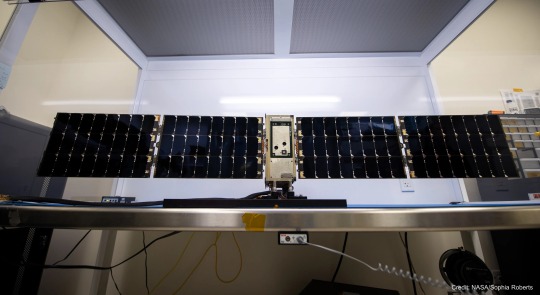
Tiny BurstCube's Tremendous Travelogue
Meet BurstCube! This shoebox-sized satellite is designed to study the most powerful explosions in the cosmos, called gamma-ray bursts. It detects gamma rays, the highest-energy form of light.
BurstCube may be small, but it had a huge journey to get to space.
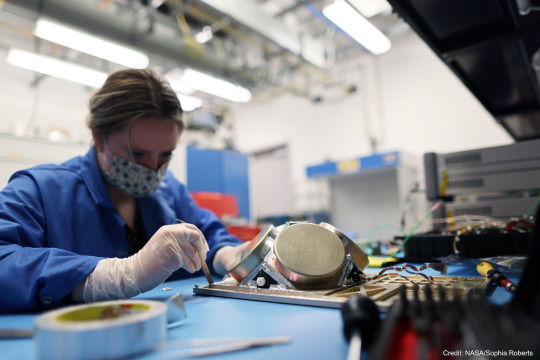
First, BurstCube was designed and built at NASA’s Goddard Space Flight Center in Greenbelt, Maryland. Here you can see Julie Cox, an early career engineer, working on BurstCube’s gamma-ray detecting instrument in the Small Satellite Lab at Goddard.
BurstCube is a type of spacecraft called a CubeSat. These tiny missions give early career engineers and scientists the chance to learn about mission development — as well as do cool science!
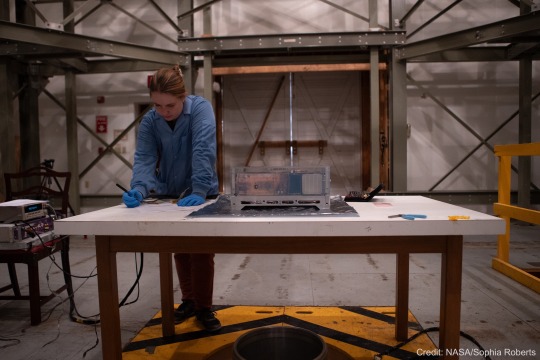
Then, after assembling the spacecraft, the BurstCube team took it on the road to conduct a bunch of tests to determine how it will operate in space. Here you can see another early career engineer, Kate Gasaway, working on BurstCube at NASA’s Wallops Flight Facility in Virginia.
She and other members of the team used a special facility there to map BurstCube’s magnetic field. This will help them know where the instrument is pointing when it’s in space.
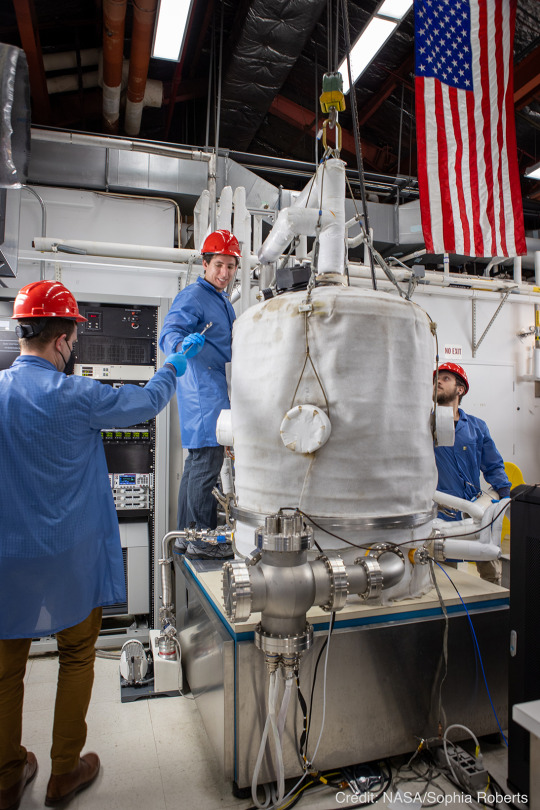
The next stop was back at Goddard, where the team put BurstCube in a vacuum chamber. You can see engineers Franklin Robinson, Elliot Schwartz, and Colton Cohill lowering the lid here. They changed the temperature inside so it was very hot and then very cold. This mimics the conditions BurstCube will experience in space as it orbits in and out of sunlight.
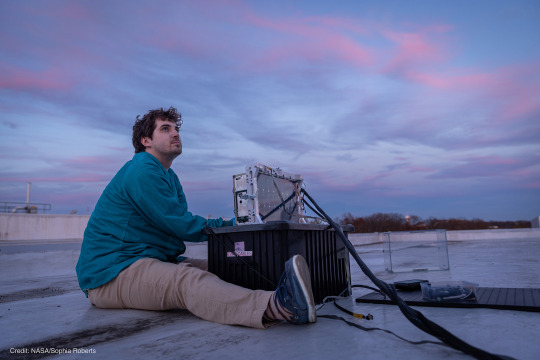
Then, up on a Goddard rooftop, the team — including early career engineer Justin Clavette — tested BurstCube’s GPS. This so-called open-sky test helps ensure the team can locate the satellite once it’s in orbit.
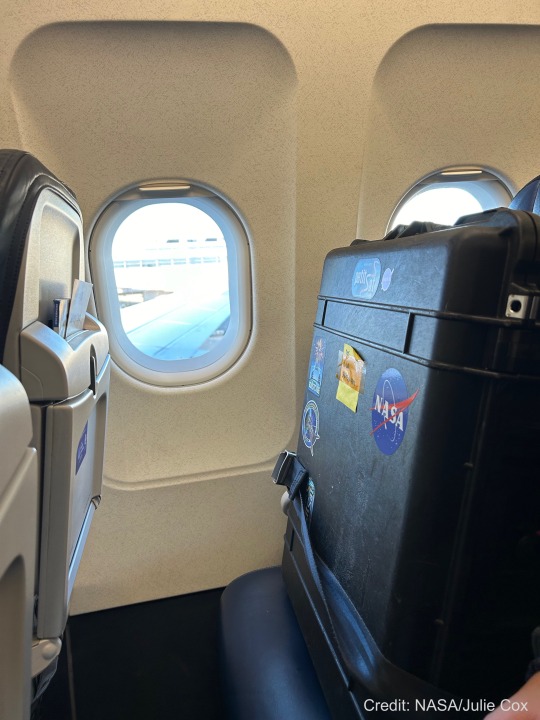
The next big step in BurstCube’s journey was a flight to Houston! The team packed it up in a special case and took it to the airport. Of course, BurstCube got the window seat!
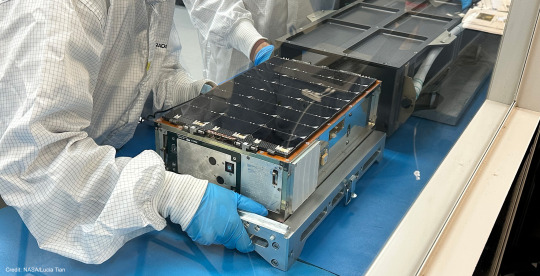
Once in Texas, the BurstCube team joined their partners at Nanoracks (part of Voyager Space) to get their tiny spacecraft ready for launch. They loaded the satellite into a rectangular frame called a deployer, along with another small satellite called SNoOPI (Signals of Opportunity P-band Investigation). The deployer is used to push spacecraft into orbit from the International Space Station.
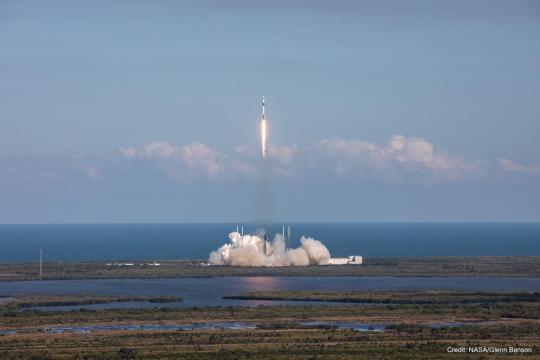
From Houston, BurstCube traveled to Cape Canaveral Space Force Station in Florida, where it launched on SpaceX’s 30th commercial resupply servicing mission on March 21, 2024. BurstCube traveled to the station along with some other small satellites, science experiments, as well as a supply of fresh fruit and coffee for the astronauts.
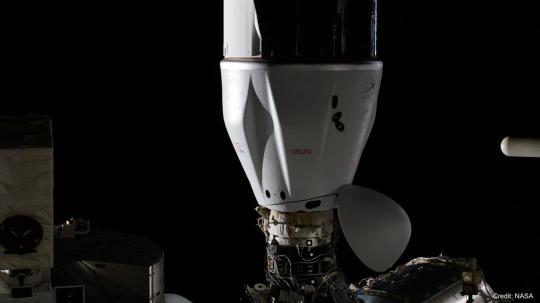
A few days later, the mission docked at the space station, and the astronauts aboard began unloading all the supplies, including BurstCube!
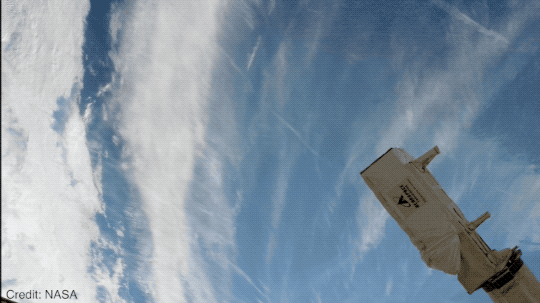
And finally, on April 18, 2024, BurstCube was released into orbit. The team will spend a month getting the satellite ready to search the skies for gamma-ray bursts. Then finally, after a long journey, this tiny satellite can embark on its big mission!
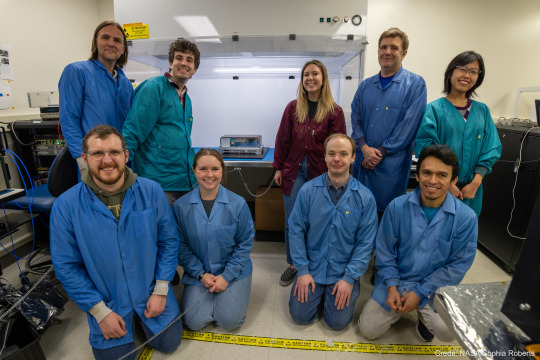
BurstCube wouldn’t be the spacecraft it is today without the input of many early career engineers and scientists. Are you interested in learning more about how you can participate in a mission like this one? There are opportunities for students in middle and high school as well as college!
Keep up on BurstCube’s journey with NASA Universe on X and Facebook. And make sure to follow us on Tumblr for your regular dose of space!
#tech#technology#dream job#jobseekers#NASA#space#spaceblr#universe#astronomy#science#gamma ray bursts#cubesat#smallsat#launch
660 notes
·
View notes
Text
Astronomers typically deal with the very, very large – big telescopes, giant galaxies, and massive exploding stars. But one of the more revolutionary astronomy tools of the decade is a mini satellite about the size of a breadbox. The satellite will act like an artificial star for astronomers to observe from the ground, allowing them to more accurately measure a space object's brightness and better understand some of the biggest mysteries in our universe, like dark energy. NASA recently approved the US$19.5 million Landolt Space Mission to launch the mini satellite into Earth's orbit.
Continue Reading.
#Science#Space#Astronomy#Physics#Satellite#CubeSat#National Aeronautics and Space Administration#NASA
81 notes
·
View notes
Text
An inescapable fate for satellites and rovers alike
The Cygnus Trial.

#mars rover#spirit rover#spacecraft#space#nasa#fanfic#satellite#mother satellite#Cygnus trial#Cygnus#hell swan#cubesat#sci fi horror#rovers#artists on tumblr
4 notes
·
View notes
Text
SciTech Chronicles. . . . . . . . . . . . . . . . . . . . . . . . . . . . . .Jan 14, 2025
#chatbots#generative#LLM#nonjudgmental#empathetic#Pixelfed#Meta#Instagram#Supernault#LGBTQ+#Icarus#Wildlife#migration#Talos#IoT#CubeSat#real-estate#lawmakers#residents#Chumash#hydroclimate-whiplash#Dylan#Borda#Pareto#McKelvey–Schofield#IIA
1 note
·
View note
Text
Satellite structure parts prepared for assembly.
Cubesat 3u type.
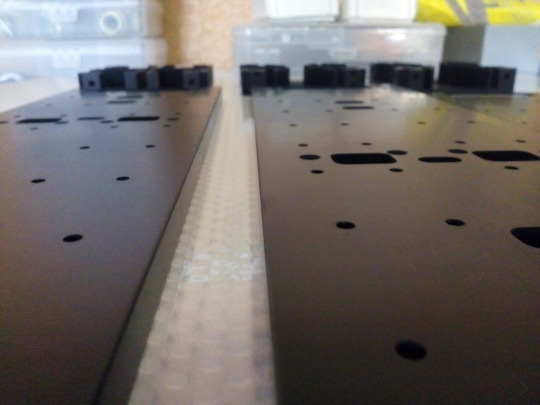
0 notes
Text
Una nueva misión observa cómo los meteoritos impactan en el otro lado de la Luna
La misión, conocida como Lunar Meteoroid Impact Observer, o LUMIO, es un CubeSat 12U que pesa alrededor de 22 kg.
A veces, es difícil recordar que la Tierra está siendo bombardeada constantemente por literalmente toneladas de desechos espaciales a diario. Los trozos más grandes forman lo que conocemos como estrellas fugaces, y la mayoría se queman en la atmósfera. Aun así, a lo largo de la historia de nuestro planeta, versiones gigantes han causado una devastación como ninguna otra vista en este planeta. El…
0 notes
Video
A CubeSat is ejected into Earth orbit from a small satellite orbital deployer by NASA Johnson Via Flickr: iss072e352275 (Dec. 9, 2024) --- A CubeSat is ejected into Earth orbit from a small satellite orbital deployer attached to the International Space Station's Kibo laboratory module. A series of CubeSats were deployed into Earth orbit on Dec. 9, 2024, for educational research missions designed by Japanese high school and college students. Credit: NASA/Butch Wilmore
0 notes
Text
CubeSat Global Market - Forecast(2024–2030)
1. Market Overview
Size and Growth: The CubeSat market was valued at approximately USD 210 million in 2020 and is expected to grow at a compound annual growth rate (CAGR) of over 15–20% by 2030. The expansion is driven by demand from commercial, governmental, and educational sectors.
Key Regions: The major regions contributing to CubeSat production and deployment are North America (with the U.S. leading), Europe, and Asia-Pacific (with rising interest from countries like India, China, and Japan).
Launches: A significant number of CubeSats have been launched in recent years, with forecasts predicting thousands more to be deployed by 2030 as launch costs continue to decline due to innovations in reusable rockets (like SpaceX’s Falcon 9).

2. Applications
CubeSats are used in a range of applications, with many sectors contributing to market growth:
Earth Observation: Used for environmental monitoring, disaster management, climate research, and agricultural data collection.
Communication: CubeSats can be used to provide Internet of Things (IoT) services, global communications, and serve as part of a broader network of satellites for data relay.
Scientific Research: Universities and research institutions are increasingly using CubeSats for space experiments, space weather studies, and astronomical observations.
Defense and Security: Government organizations use CubeSats for surveillance, reconnaissance, and intelligence gathering.
Sample Report:
3. Market Drivers
Lower Costs: CubeSats are much cheaper to build and launch than traditional satellites, making them more accessible to both private companies and educational institutions.
Miniaturization of Technology: Advancements in electronics, power systems, and communications have allowed powerful capabilities to be incorporated into CubeSats despite their small size.
Standardization: The CubeSat format (often measured in units, or “U” — typically 1U, 2U, 3U, etc.) has become a global standard, simplifying production, integration, and launch processes.
Government Funding: Space agencies such as NASA, ESA (European Space Agency), and private sector organizations are heavily investing in CubeSat technology for their missions.
4. Challenges
Regulatory Hurdles: As more CubeSats are deployed, concerns around orbital debris and spectrum allocation have led to stricter regulatory oversight.
Space Debris: The increased number of CubeSats adds to the problem of space debris, requiring better end-of-life disposal solutions.
Limited Lifespan: CubeSats have a shorter operational lifespan compared to traditional satellites, typically lasting 1–2 years.
Inquiry Before Buying:
5. Key Players
Several companies and organizations are shaping the CubeSat market:
Planet Labs: Known for its large constellation of Earth observation CubeSats.
Spire Global: Offers CubeSat-based data services for weather forecasting and tracking ships and aircraft.
NanoAvionics: Specializes in building CubeSats and providing satellite solutions to other businesses.
Tyvak Nanosatellite Systems: A leading company in CubeSat development and launch services.
AAC Clyde Space: A European company that provides CubeSat platforms and related technology.
6. Future Outlook
Growth of Mega-Constellations: Companies like SpaceX and Amazon are planning to deploy massive constellations of small satellites, including CubeSats, to provide global internet coverage.
Advanced Capabilities: Future CubeSats are expected to become more capable, with better propulsion systems, advanced sensors, and autonomous operations.
International Collaboration: As the market grows, collaborations between space agencies, universities, and private companies across borders will continue to spur innovation and expand the CubeSat ecosystem.
Schedule a Call:
7. Investment and Funding
Venture capital and private investments in the space sector are rising, with CubeSat ventures receiving a significant share. Startups in this field are attracting funding for new technologies in propulsion, data analytics, and satellite servicing.
In conclusion, the CubeSat market is set for robust growth, supported by technological advancements, expanding use cases, and decreasing launch costs. The sector is expected to play a crucial role in the broader new space economy, with widespread applications across industries.
Buy Now:
The United States has been leading the way in CubeSats innovation right from their inception. NASA, in cooperation with academic institutions, has played a pivotal role in driving forward CubeSat technology. It has established the CubeSat standard, which has become the worldwide yardstick for CubeSat design. NASA’s CubeSat Launch Initiative (CSLI) regularly presents opportunities for CubeSat developers to catch a ride to space on a variety of missions.
For more about CubeSat Global Market click here
0 notes
Text
Use a Deep Hole?
I was thinking about saying you couldn’t dig a mile deep. There are boreholes, up to 12 miles deep. The boreholes aren’t more than a foot or two wide. What would we do with a mile deep shaft? My first thought was a rail gun using electromagnetic rails on all four sides to push a ball out of the hole to the top and blast it into orbit. Then I saw this video, I was crushed, then again, what about…

View On WordPress
0 notes
Text
NASA Seeks Student Missions to Send to Space in 2026, Beyond
Technicians with the University of Kansas prepare their KUbeSat-1 for integration at Firefly’s Payload Processing Facility at Vandenberg Space Force Base, California on Thursday, April 25, 2024. Credit: NASA NASA Opportunities NASA announced a new round of opportunities for CubeSat, developers to build spacecrafts on that will fly on upcoming launches through the agency’s CSLI (CubeSat Launch…
0 notes
Text
#Nanosatellites#Microsatellites#SatelliteMarket#SpaceTech#SmallSatellites#AerospaceIndustry#SatelliteInnovation#CubeSat#SatelliteTechnology#SpaceExploration
0 notes
Link
Welcome to Astronomy Daily, your go-to podcast for the latest news and updates from the fascinating world of astronomy and space exploration. I'm your host, Anna, and I'm thrilled to have you with us today.We've got a lineup of exciting stories that span from groundbreaking missions to the cutting-edge technology shaping our future in space.In today's episode, we're diving into SpaceX's preparations for the fifth flight of its revolutionary Starship program, including heat shield upgrades and static fire tests. We'll also explore groundbreaking discoveries from the James Webb Space Telescope, revealing that spiral galaxies were more common in the early universe than previously believed. Next, we'll look at China's Tiangong space station, where astronauts recently completed a successful spacewalk to install space debris protection. Finally, we'll delve into advancements in CubeSat propulsion technologies, breaking down various systems and their potential impact on space exploration.So sit back, relax, and let's embark on this cosmic adventure together. Don't forget to visit our website at astronomydaily.io, where you can stay up to date with the latest space news through our continually updating news feed. There, you'll also find additional resources and the full archive of our podcast episodes available for streaming anytime. Stay curious, keep looking to the stars, and make sure to tune in next time for more cosmic insights and adventures. Until then, this is Anna signing off. Clear skies and happy stargazing. https://www.astronomydaily.io https://www.bitesz.com Support our sponsor...NordVPN who helped make this episode possible. Get our special deal at www.bitesz.com/nordvpn Become a supporter of this podcast: https://www.spreaker.com/podcast/astronomy-daily-the-podcast--5648921/support.
#18#cubesat#elon#exploration#galaxies#james#mission#musk#nasa#program#propulsion#shenzhou#space#spacewalk#spiral#starship#station#telescope#tiangong#webb
0 notes
Text
Scientists have built a radical information engine that harnesses molecular energy

- By Nuadox Crew -
Scientists have developed an innovative information engine that uses molecular energy, detailed in research from Simon Fraser University.
They trapped a microbead in water using optical tweezers, a laser-based tool, within a consistent temperature environment known as a heat bath. This setup allows the bead to move, generating an information trail that illustrates how much energy the bead captures and uses.
This concept, dating back to James Clerk Maxwell's thought experiment in 1867, demonstrates the potential to harness micro-level information for energy conversion.
The research suggests that such engines could deepen our understanding of molecular processes in nature and our bodies, possibly revealing new insights into biological functions and efficiencies.
Header image credit: Image Creator from Microsoft Designer/DALL.E (AI-generated)
Read more at Popular Mechanics/Microsoft Start
Scientific paper: du Buisson, J., Sivak, D. A., & Bechhoefer, J. (2024). Performance limits of information engines. Advances in Physics: X, 9(1). https://doi.org/10.1080/23746149.2024.2352112
--
Other recent news
Firefly Aerospace aims to launch eight CubeSat satellites after a previous mission was scrubbed.
0 notes
Text
RADICALS Launches On Swedish Sounding Rocket
Testing out new ways of protecting astronauts in space
The experiment – called RADICALS – has the capacity to fundamentally change how astronauts and electronics are protected from harmful radiation in space by promising to be smaller, lighter and filter out more types of radiation. The 10cm cubesat was joined by eleven other experiments making up the four hundred and forty two kilo payload on the maiden flight of the Red Kite and Improved Malemute…

View On WordPress
0 notes
Text
Chandra de la NASA atrapa púlsares araña que destruyen estrellas cercanas
Un grupo de estrellas muertas conocidas como “púlsares araña” están destruyendo estrellas compañeras a su alcance La aguda visión de rayos X de Chandra es crucial para estudiar este tipo de objetos en cúmulos globulares, ya que a menudo contienen muchas fuentes de rayos X en un campo de visión pequeño. En estas imágenes, los datos de Chandra se muestran a lo largo de una vista óptica del Hubble…

View On WordPress
#astrofísica#aura#cúmulo globular#Centro Marshall#CubeSat#Descubrimientos#Estrellas de neutrones#Estudios#Investigaciones#JPL-Caltech#NASA#pulsares#STScI#Universo
0 notes
Text
Lanzaron al espacio el primer satélite de madera
Cada lado del satélite experimental en forma de caja, llamado LignoSat, mide solo 10 centímetros (cuatro pulgadas).
El primer satélite de madera del mundo ha despegado en un cohete SpaceX, según anunciaron el martes sus desarrolladores japoneses, como parte de una misión de reabastecimiento a la Estación Espacial Internacional. Los científicos de la Universidad de Kioto esperan que el material de madera se queme cuando el dispositivo vuelva a entrar en la atmósfera, lo que podría proporcionar una forma de…
0 notes